Kumano Kodo
Japan
World Heritage Pilgrimage Route
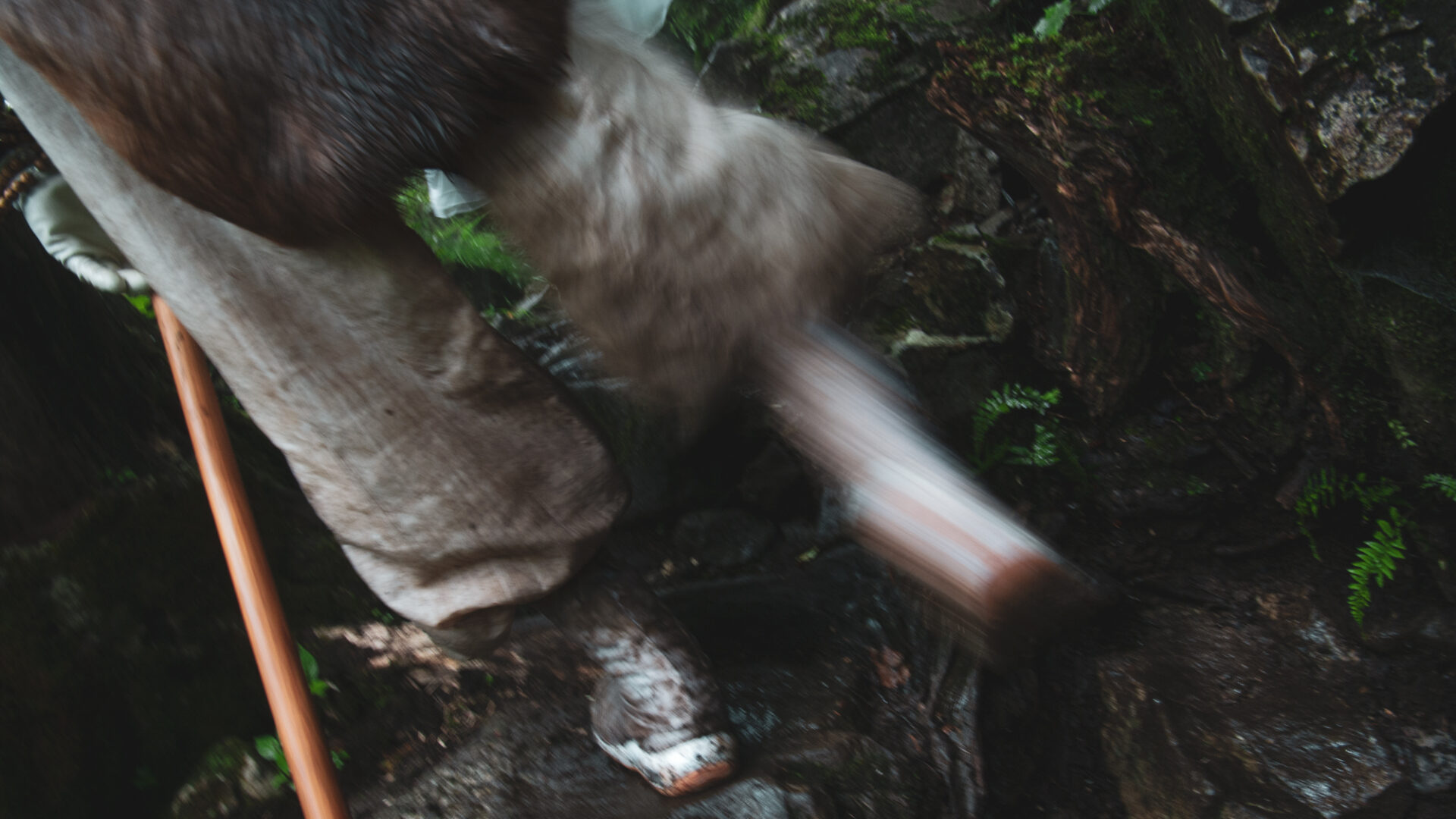
It was founded by En no Gyōja about 1,400 years ago.
This ancient route, deeply rooted in tradition, serves as a sacred training ground for practitioners of Shugendō—a syncretic religious discipline blending elements of Taoism, Shinto, Buddhism, and indigenous Japanese shamanism.
Shugendō emphasizes rigorous ascetic practices in the mountains to cultivate spiritual power and attain enlightenment. Along the trail, practitioners engage in acts of devotion and endurance, believing that by confronting the hardships of nature, they can purify both body and mind.
The journey incorporates 75 spiritual locales, called "nabiki," dispersed along the route—caves, rocks, waterfalls, and mountain peaks that serve as sacred sites for prayer, meditation, and physical training. Each site invites pilgrims to reflect on their spiritual path, pushing them to transcend their physical limits.
Historically, women were prohibited from traversing most sections of this sacred route, with Mount Ōmine in particular remaining closed to them—a tradition still observed today to preserve its ancient religious customs.
The full pilgrimage takes several days, winding through remote wilderness areas with few opportunities to deviate from the path, reinforcing a profound sense of isolation and devotion among travelers.
In 2004, UNESCO designated the Ōmine Okugakemichi as part of the World Heritage Site "Sacred Sites and Pilgrimage Routes in the Kii Mountain Range," recognizing its enduring cultural and spiritual significance on the Kii Peninsula.
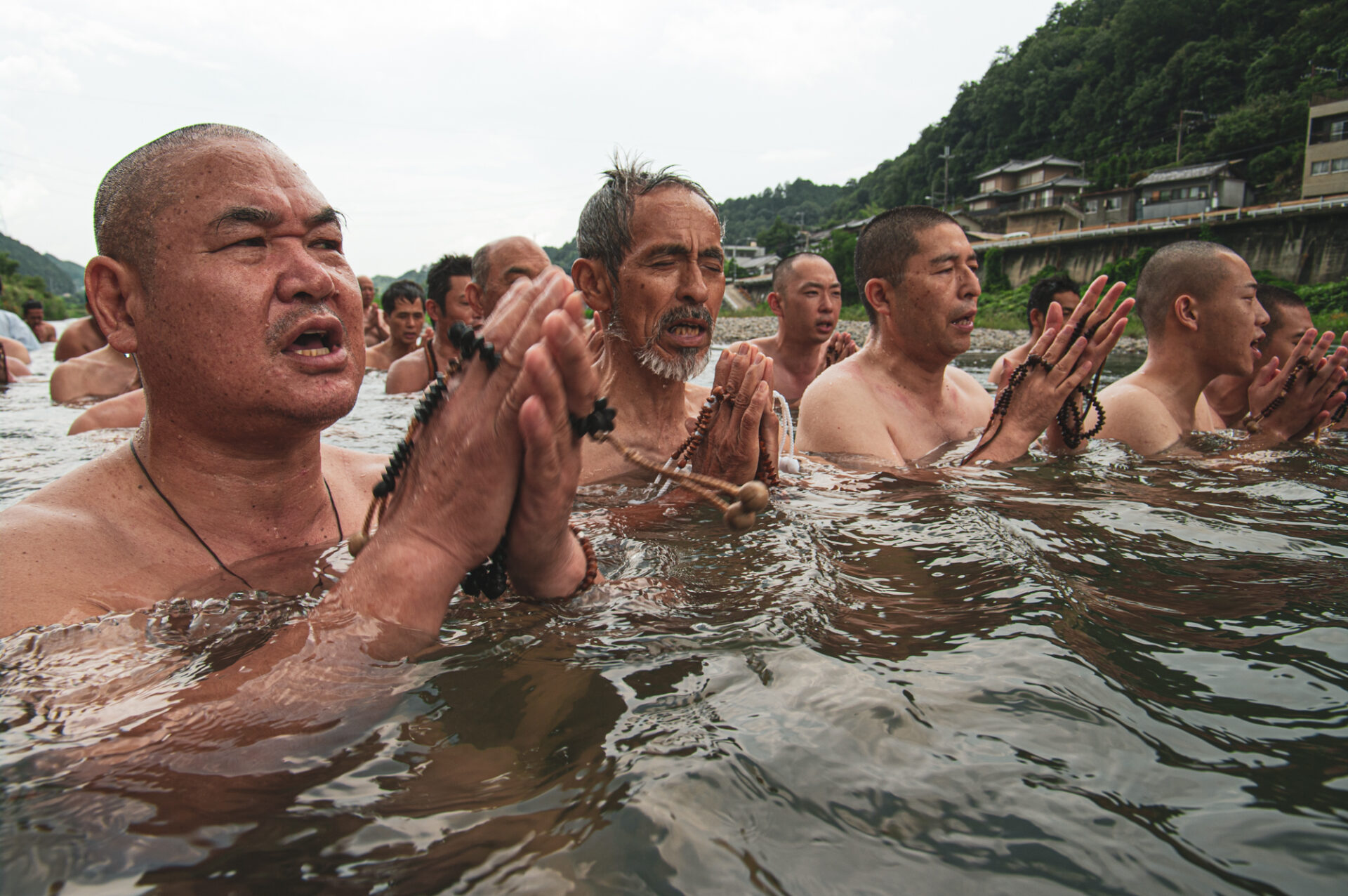
After purifying the body with river water, the pilgrimage begins.
(Yoshino River in Nara Prefecture)
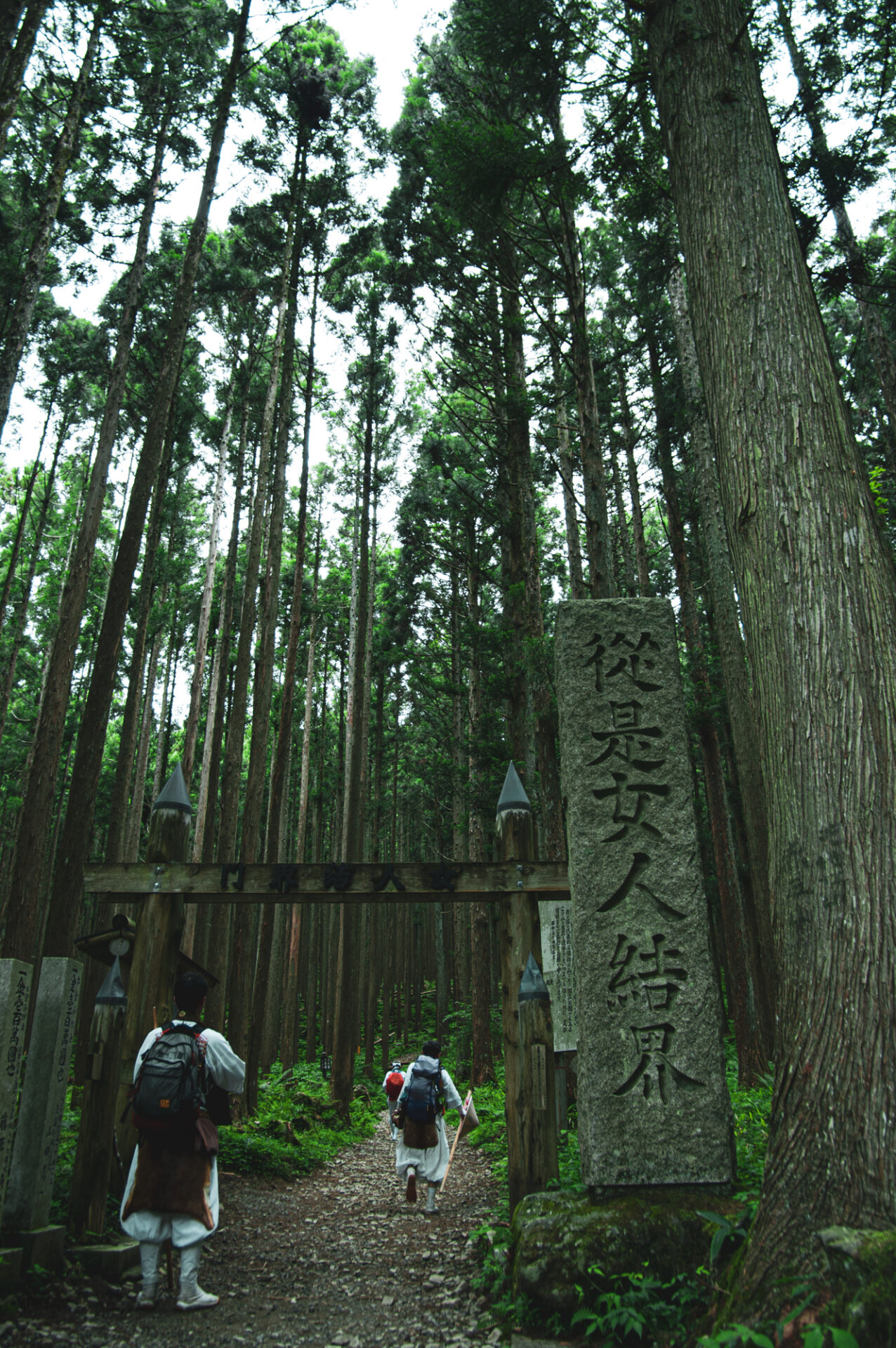
A stone monument with the words "No Women Allowed”
In the old days, huge mountains were believed to be dangerous places where evil spirits of rivers and mountains lived, and women were forbidden to approach the mountains for their own safety.
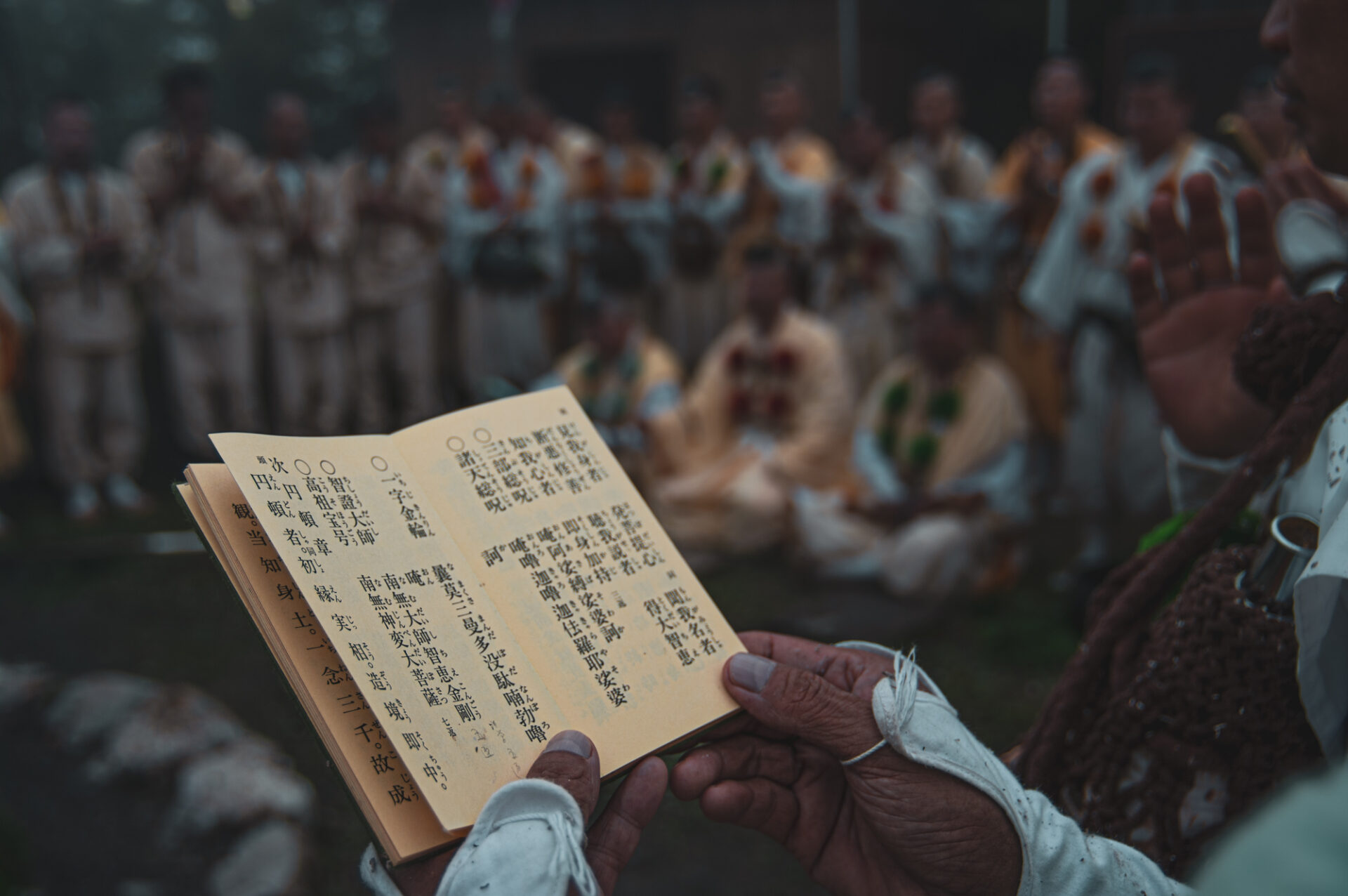
They get up after 3:00 a.m. and read sutras for About 1 hour.
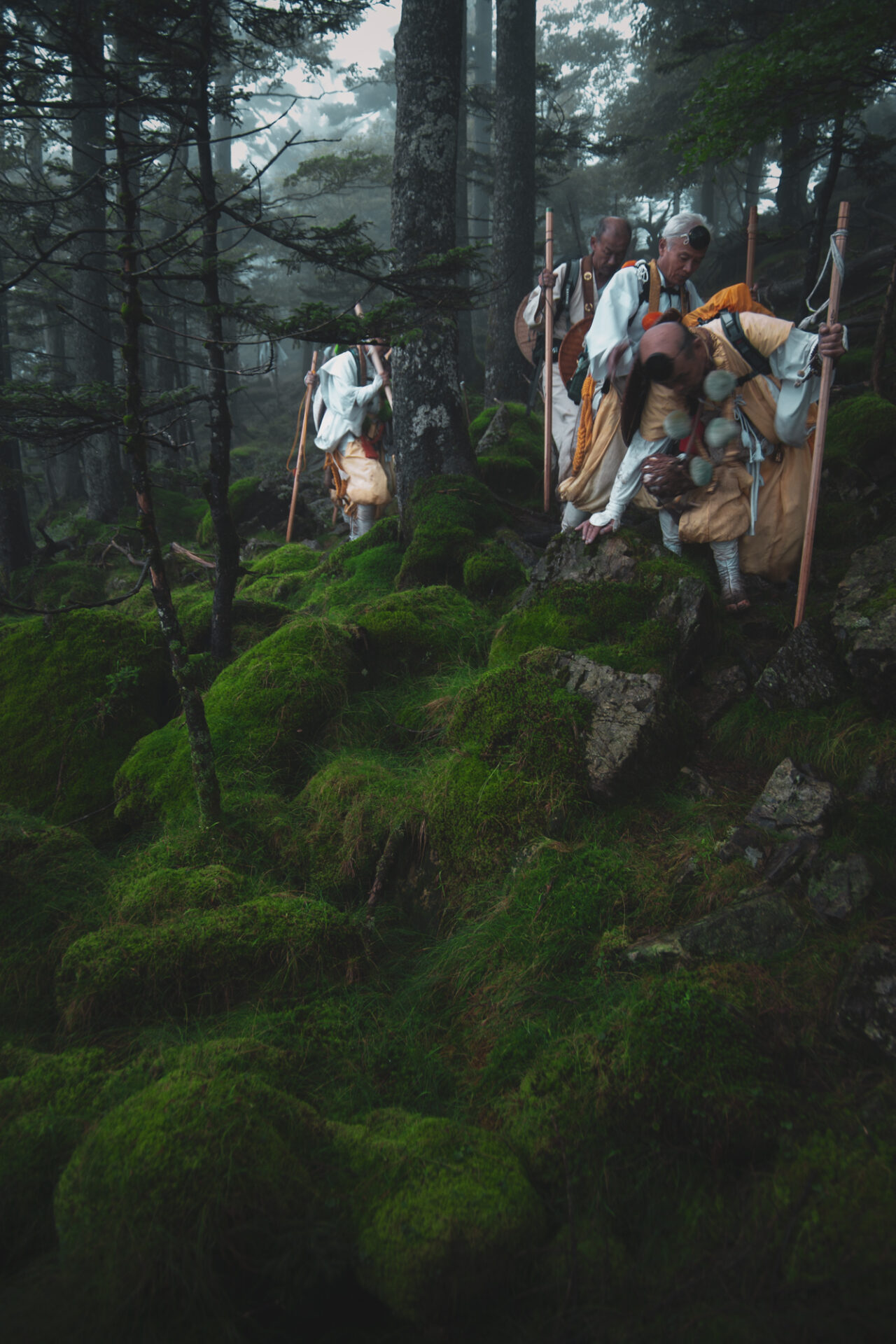
Due to the region's abundant rainfall, the moss is as beautiful as a green carpet.
Therefore, it is very slippery underfoot.
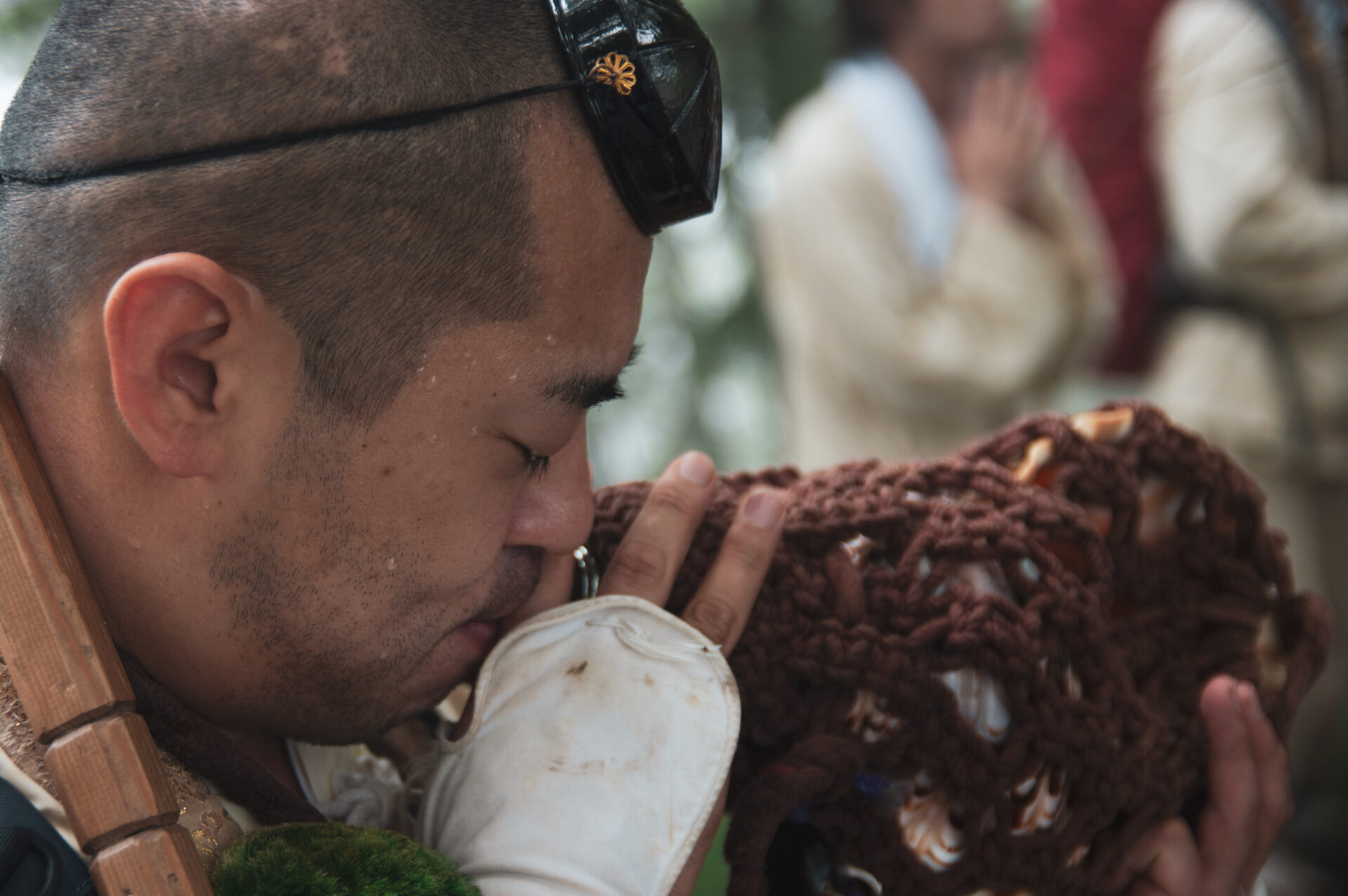
The sound of the conch is said to drive away wild beasts and demons.
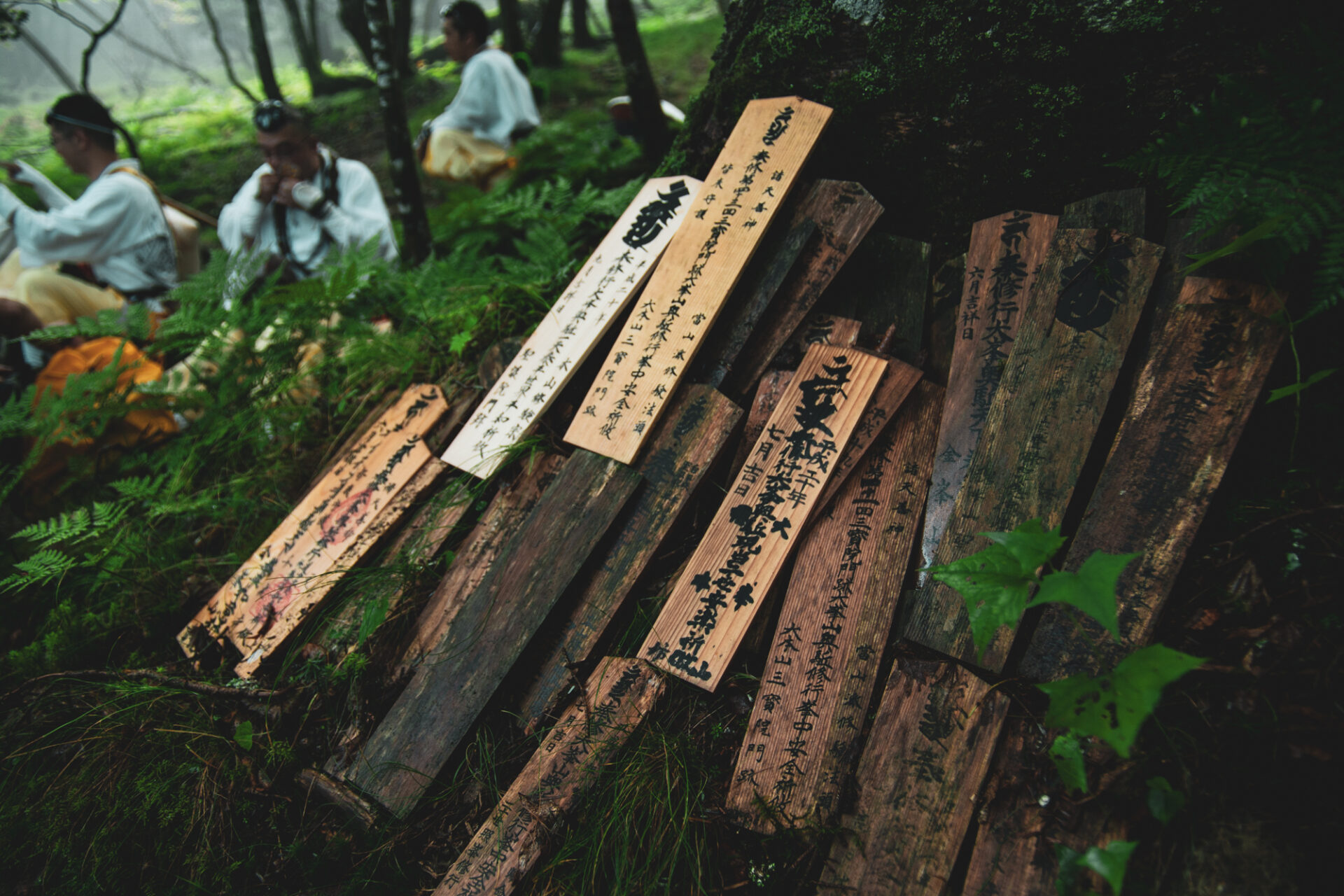
Pray using a GOMAFUDA.
GOMAFUDA is a type of amulet distributed at shrines and temples to pray for blessings from the gods and Buddha.
The object of prayer is not only idols, but also trees, rocks, mountains, rivers, etc.
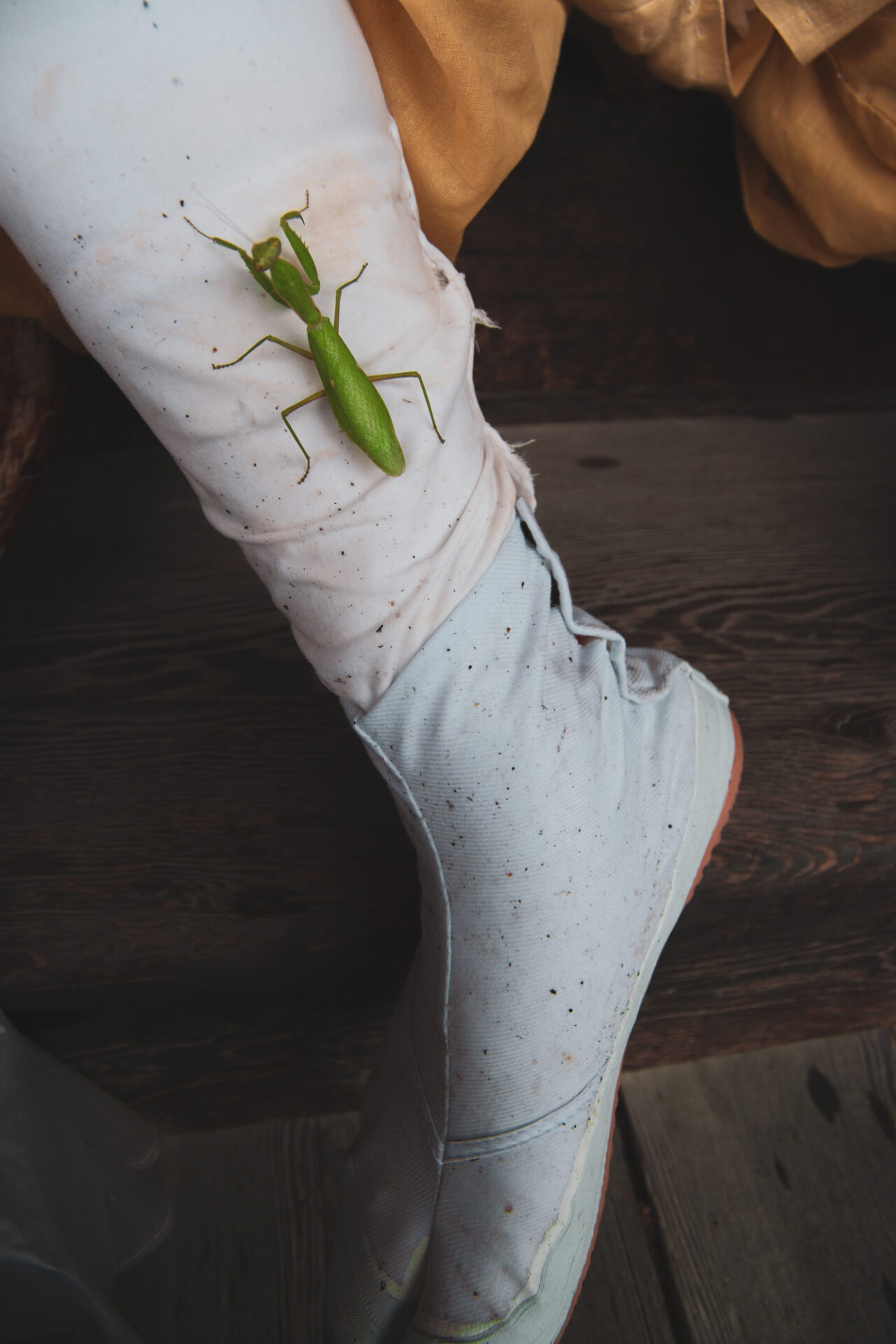
The yamabushi wear white attire symbolizing purity and rebirth.
Resembling the funeral attire of the deceased, this clothing signifies the renunciation of the past and the emergence of a new spiritual self.
The mountains, for yamabushi, represent a maternal womb where they undergo training to be reborn into a new life.
Symbolically, entering yamabushi training signifies a form of death and subsequent rebirth.
*Yamabushi are traditional Japanese ascetic practitioners, often considered mountain monks. They engage in rigorous mountain training and follow religious practices, residing in mountain temples or secluded areas. Yamabushi are known for their distinctive attire and implements, and their lifestyle is influenced by mountain worship and esoteric Buddhist teachings.
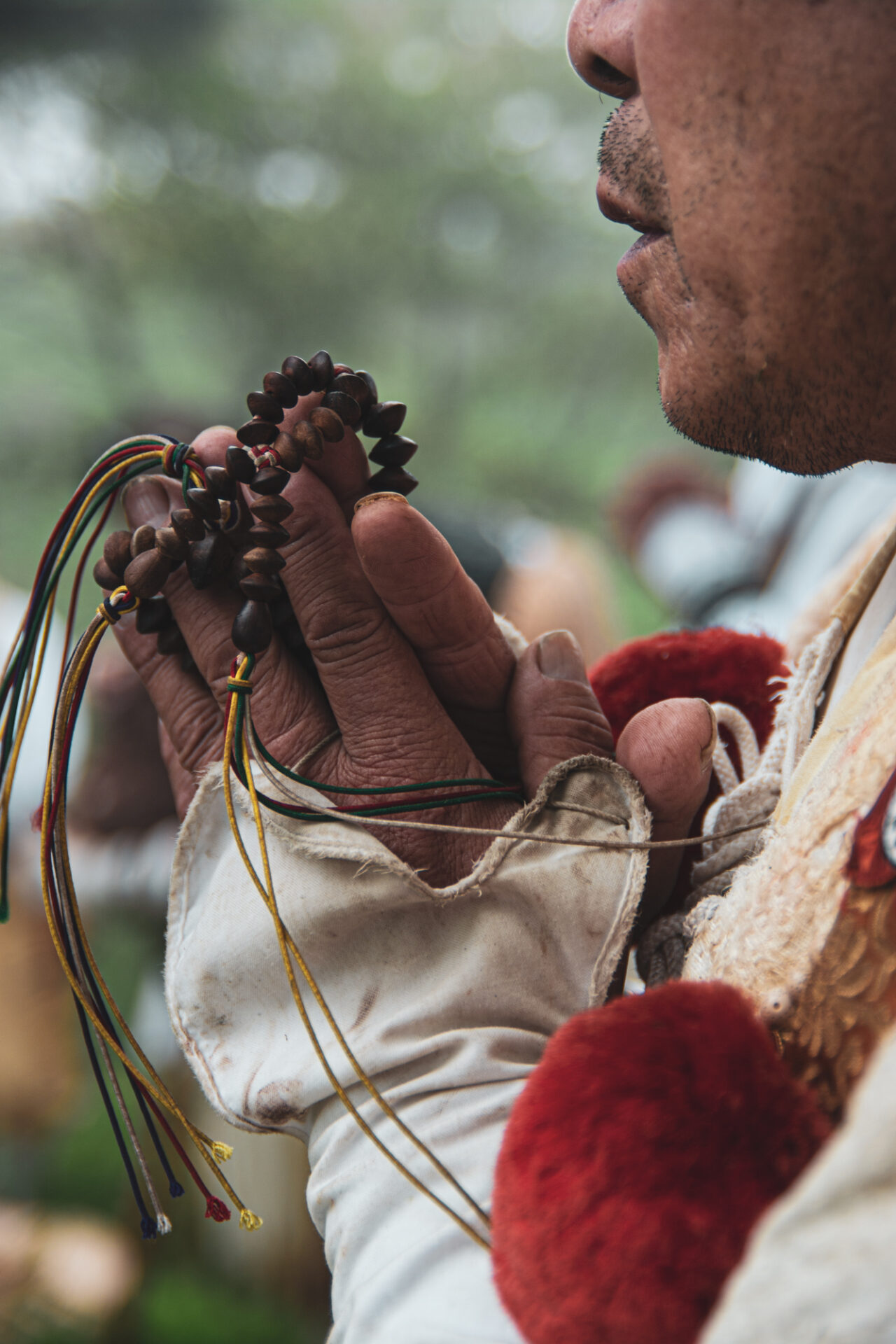
Pray with a JUZU.
A JUZU is a device, primarily used in Buddhist practices for meditation and prayer, consisting of a string of connected beads.
It serves as an aid in religious practices and meditation.
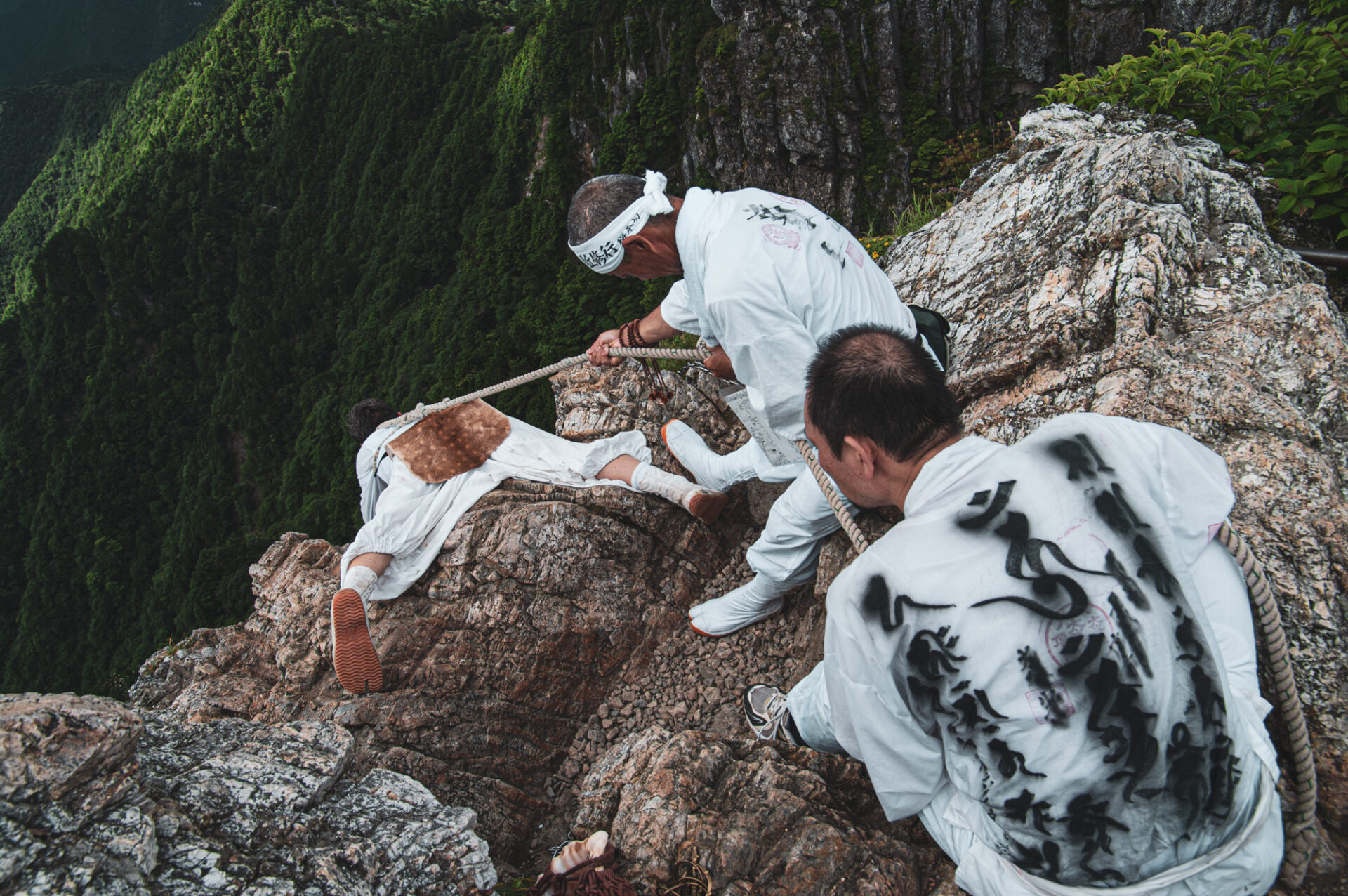
From a precipice, one experiences a near-death experience.
This practice is called "pseudo-rebirth," meaning that by practicing near death, one is reborn.
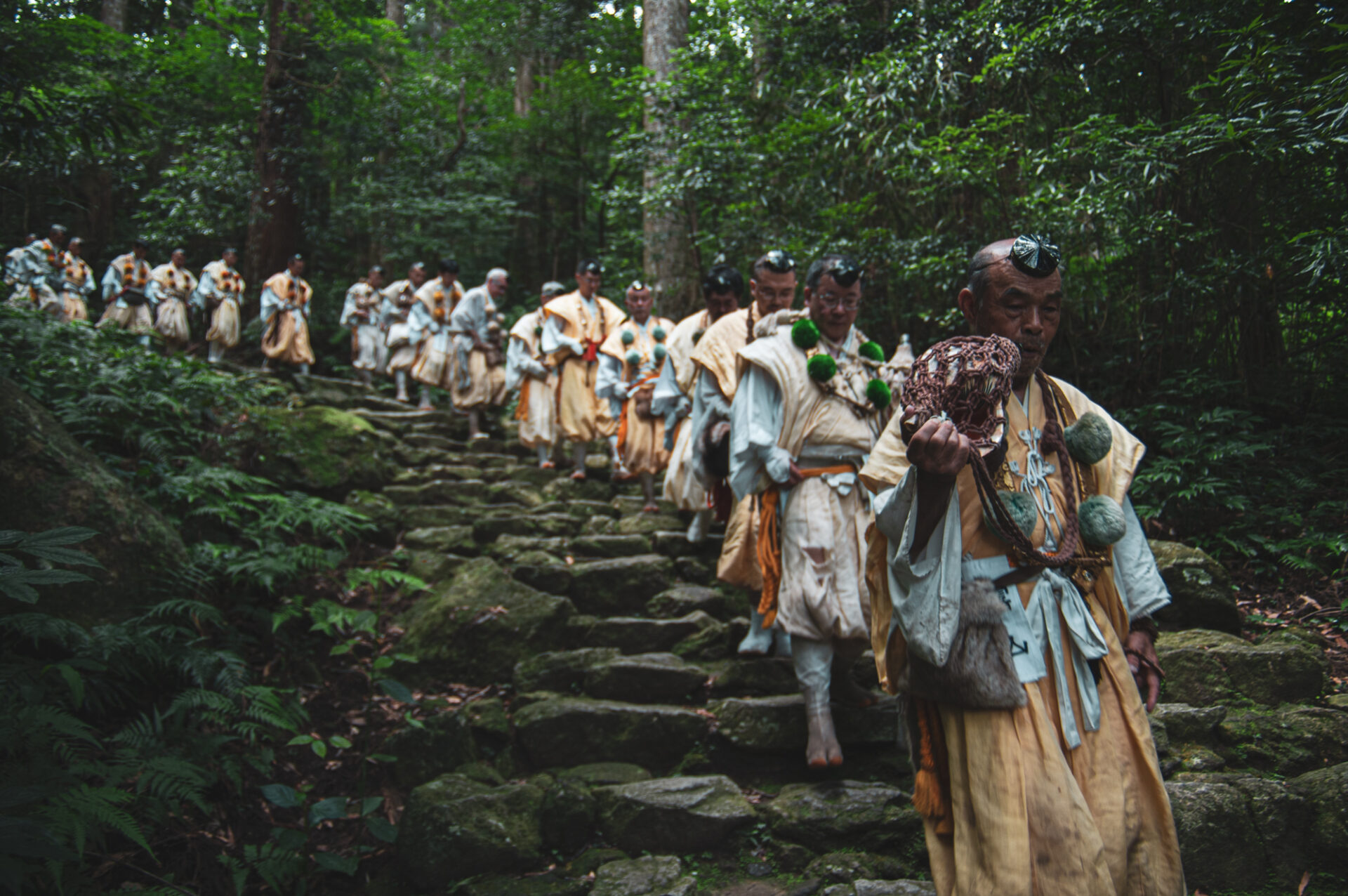
They will soon arrive at Kumano Nachi Taisha Shrine, the final place of prayer.
I was asked by a Spaniard, "There is a World Heritage pilgrimage route in Japan, have you been there? "
Kumano Kodō is also a rainy area with many pilgrimage routes.
Shugendo practitioners wear white clothes and tabi (split-toed socks), eat Shojin-Ryori, and make the pilgrimage.
*Shojin-Ryori is a Buddhist vegetarian cuisine emphasizing plant-based ingredients like vegetables, fruits, beans, and grains. Due to Buddhism's prohibition on killing animals, Shojin-Ryori avoids meat and fish in its dishes.
